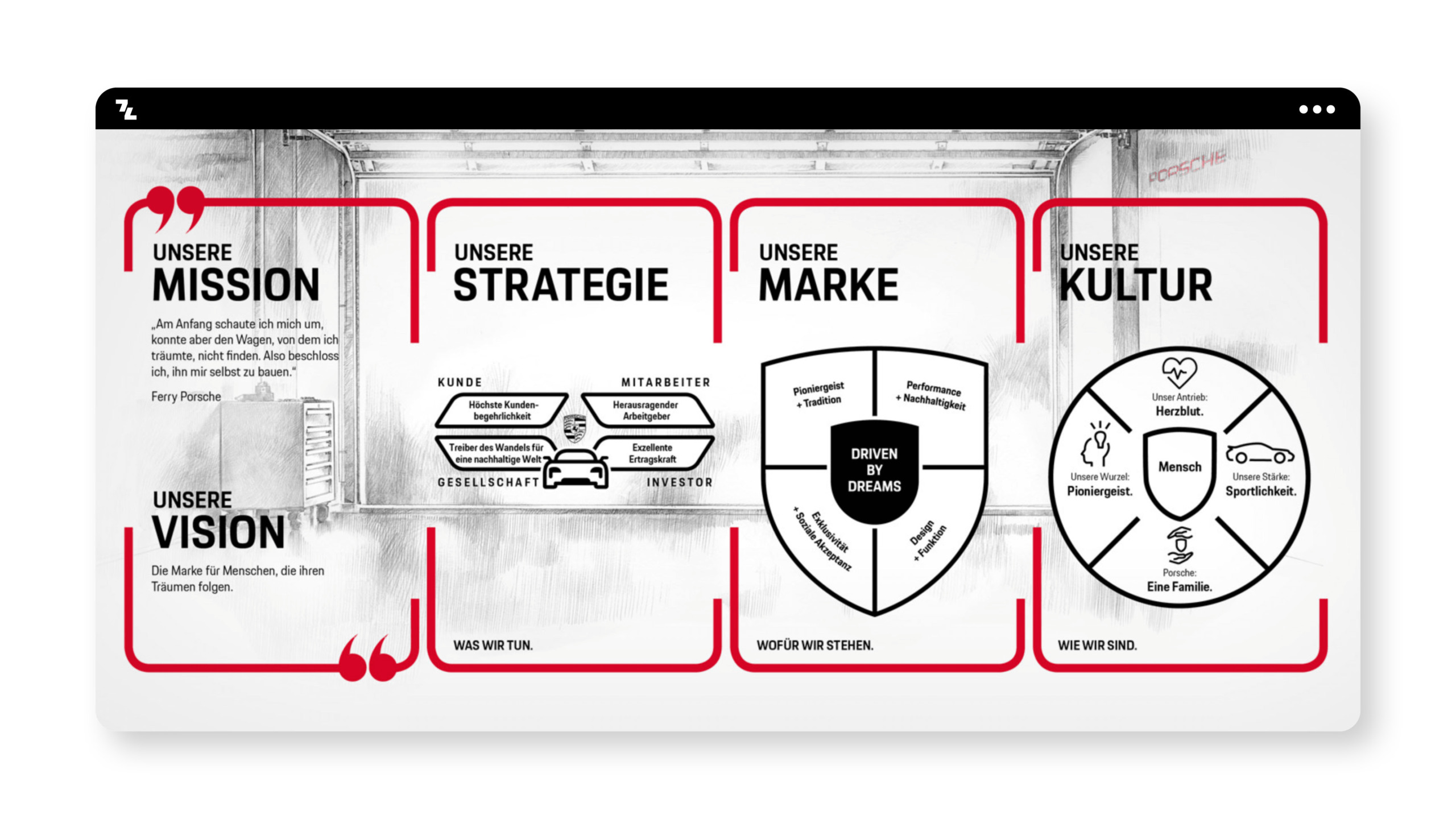A vision statement sounds almost mystical. But it is not supernatural, quite the opposite. Rather, a vision statement is a foundational business document.
There is a lot of paperwork that floods any organization’s office, but the vision statement is unique from the rest. It is often confused with a mission statement, but it has a different purpose. A vision statement looks to the future, but a mission statement talks about what the company is doing in the present.
Since the vision statement is a foundational document that sets the company’s direction for the coming years, consider using project planning tools and brainstorming techniques to get input from all team members. In this way, you gain greater acceptance in the company and expand your network for collecting ideas.
Definition
A vision statement is a document that sets forth the current and future goals of an organization. The vision statement is intended as a guide to help the organization make decisions that are consistent with its philosophy and stated goals. It can be viewed as a roadmap of sorts, showing where the company wants to be within a certain time frame. A vision statement is not only used in business, non-profit organizations and government agencies also use them to set goals.
Vision Statements are not necessarily set in stone. They can be revisited, reviewed and revised as needed. However, the changes should be minimal because a vision should be well thought out before it is finalized.
A vision statement does not have a specific length. It can be as short as an aspirational sentence or as long as pages, depending on how detailed you want to make it. However long it may be, the vision statement is formally written and serves as a reference in corporate documents to guide action now and in the future.
Intended use
A vision statement is not a figment of the organization’s collective imagination that is then filed away. Similar to a mission statement, it is a living document called a lodestar to guide a company to its next innovation.
Some may think that a vision statement is a waste of time, but it does an important job for the company. For example, it establishes a broader strategic plan for the organization. It’s very easy to get bogged down in the day-to-day details of running a business. The vision statement helps you plan for the long term.
You can set goals all you want, but without motivating your employees to reach that goal, you probably won’t get far. A motivational vision statement will both motivate existing employees and attract talent to the company. You will want to work in a place that has a vision.
A strong vision statement also helps differentiate your company from others. All companies want to become profitable, but a company that can set an agenda to achieve that goal will stand out and inspire others. Use a vision statement to focus the company’s efforts on the core competencies it needs to achieve its goals.
Once the vision statement is in place, the hard work begins. Project management software helps you achieve your goals and objects. ProjectManager does this with one of the most robust Gantt charts on the market. Our tool creates a visual timeline, links dependencies and sets milestones. But we go further by calculating the critical path and then saving the baseline. Now you know which tasks are essential and whether the actual progress matches your planning. Turn your vision into reality and try our software for free today.
Instruction
Based on the above statement, a vision statement needs to be formulated. The following is an overview of the most important points that help formulate a professional vision statement.
- Be concise: This is not the place to stuff a document with flippant statements. It should be simple, easy to read and reduced to the essentials so that it can be memorized and repeated accurately.
- Be clear: A good rule of thumb for clarity is to focus on one main goal rather than trying to fill the document with a scattering of ideas. A clear goal is also easier to focus on and achieve.
- Have a time horizon: A time horizon is simply a fixed point in the future when you will achieve and evaluate your vision statement. Define this point in time.
- Make it future-oriented: Again, the vision statement is not what the company is currently doing, but a future goal that the company wants to align with.
- Remain stable: The vision statement is a long-term goal that ideally should not be influenced by the market or technological changes.
- Be challenging: Nevertheless, don’t be timid in formulating your goals. Your goal should not be too easy to achieve, but also not so unrealistic that it is discarded.
- Be abstract: The vision statement should be general enough to capture the organization’s interests and strategic direction.
- Be inspirational: live up to the title of the document and create something that rallies the troops and is worth striving for as a goal for everyone in the organization.
Examples
Below are a few examples of successful companies that have developed some inspiring vision statements in recent years.
Apple
“To make the best products on earth, and to leave the world better than we found it.”
“To organize the world’s information and make it universally accessible and useful.”
Tesla
“To create the most compelling car company of the21st century by driving the world’s transition to electric vehicles.”
Nike
“Bring inspiration and innovation to every athlete* in the world. (*If you have a body, you are an athlete.)”
Amazon
“To be the world’s most customer-centric company.”
Porsche
“The brand for those who follow their dreams.”

Burger King
“To be the most profitable QSR business, through a strong franchise system and great people, serving the best burgers in the world.”
Volkswagen
“To make this world a mobile, sustainable place with access to all the citizens.”
Summary
The vision statement defines the vision and goals of a company or brand. In contrast to the mission statement, this one talks about the future. The mission statement describes the current work and the vision statement where this should lead.





